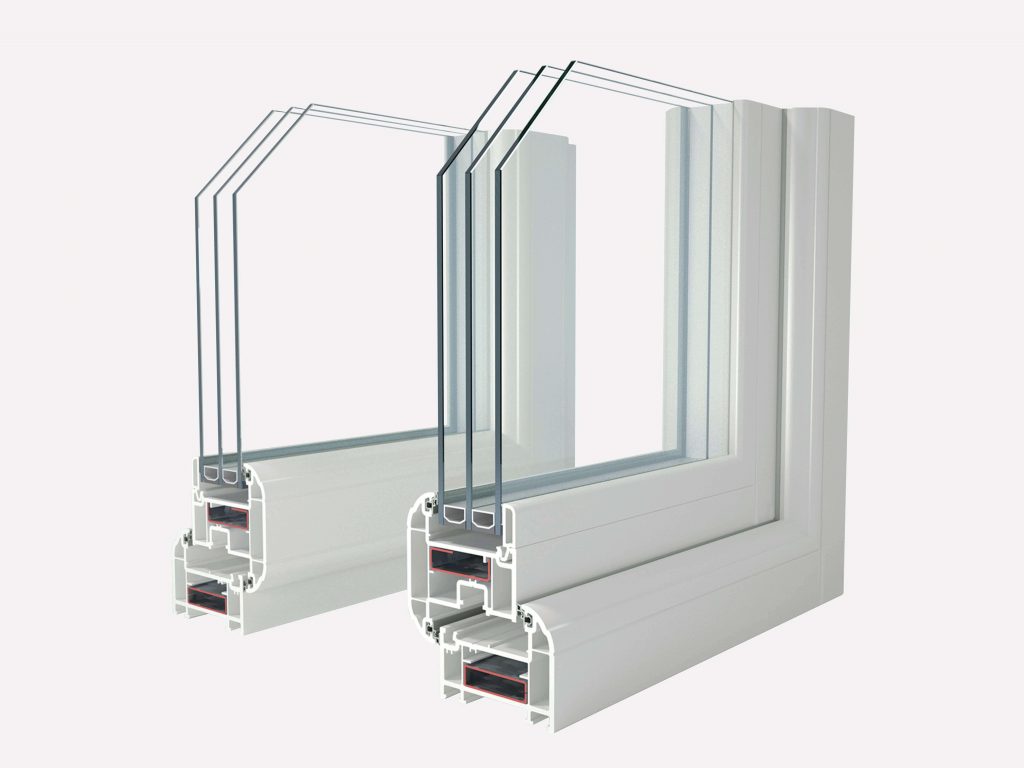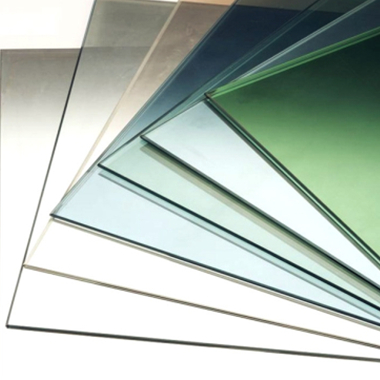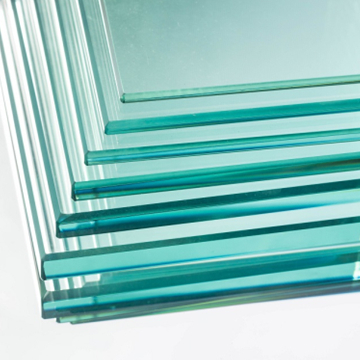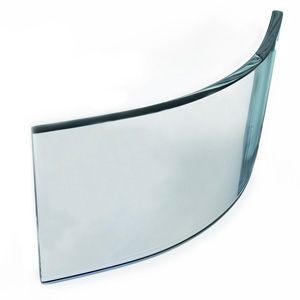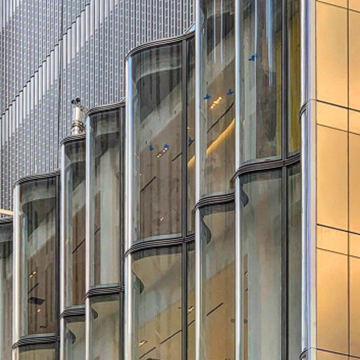Product Data & Specifications Of Annealed, Heat Strengthened& Tempered Glass
Annealed float glass can be cut to a desired finished size and tempered to provide a glass product with greater resistance to thermal, mechanical or impact loads or to break in a manner that allows its use where safety glass is mandated by federal law or building code. Although tempered glass has increased resistance to thermal loads, it is not a fire-rated glazing product.
Glass is heat-treated by heating annealed glass to a temperature of approximately 1,150°F (621°C), then rapidly cooling it.
The glass is cooled by a carefully controlled airflow (also known as quenching), which uniformly cools all glass surfaces simultaneously. High airflow rates produce tempered glass and much lower airflow rates produce heat-strengthened glass.
Fully tempered glass, normally referred to as just "tempered glass", is approximately four times stronger than annealed glass of the same thickness and configuration. When it is broken, tempered glass fractures into small fragments that reduce the probability of serious injury as compared to annealed glass. Because tempered glass fractures into many small pieces, it tends to vacate the opening, when broken, more than heat-strengthened and annealed glass does. Tempering also enables heat absorbing glass products to withstand high thermal loads and stresses, but the industry recommends the use of heat strengthened glass where thermal stress is predicted. The tempering process adds distortion and changes the glass surface, factors that should be considered if appearance of reflected images is critical. Tempered glass is used where high resistance to mechanical loads calls for maximum glass strength achievable for a given glass thickness, and where a safety glazing product is mandated by law, by building code or by a desire for maximum safety in the event of human impact.
Tempered Glass Standards & Requirements
Tempered glass meets all safety glazing standards including the federal safety glazing standard, CPSC 16 CFR 1201. The higher the amount of residual stress in a piece of glass, the smaller the particle size will be when the glass fractures. When annealed glass fractures, the cracks are far apart, and the pieces are normally quite large with sharp edges. As a result of the heat-treating process, tempered glass fractures into small particles when broken, thus meeting the safety glazing requirements of the federal safety glazing standard, CPSC 16 CFR 1201, the Canadian safety glazing standard CAN/CGSB-12.1 and the American National Standard, ANSI Z97.1. These safety glazing standards require the ten largest particles of the test specimen to weigh no more than the equivalent weight of 10 sq. in. of glass thickness. The breakage characteristics of heat-strengthened glass can vary within the allowable stress range of the product (3,500 to 7,500 psi surface compression). Heat-strengthened glass typically fractures into large pieces that are more similar to annealed glass than to tempered glass.
Fabrication work such as cutting, polishing, grinding, drilling, notching, sandblasting, etching or any other process that modifies the glass must be completed prior to heat-treating the glass. AST C1048 provides specific limitations and requirements for the size and location of holes and notches. Any fabrication process completed after the glass is heat-treated, such as sandblasting or V-grooving, will reduce the strength of the glass.
Facts about Tempered Glass
·The color, clarity, chemical composition and light transmission characteristics of glass remain unchanged after tempering.
·Tempering does not reduce glass deflection under load. Glass deflection can be reduced by using glass of greater thickness.
·Tempered glass breaks into small pieces less likely to cause injury than annealed or heat strengthened glass.
·Any fabrication or field alteration of tempered glass will weaken or break tempered glass.
·Tempered glass is subject to rare "spontaneous breakage" caused by one or a combination of these causes: surface or edge damage, deep scratches or gouges, severe weld spatter, missile or windborne debris impact, glass to metal contact, wind/thermal loading or rare inclusions or impurities in the float glass that weaken the compression layer of the glass. Breakage may occur long after the damaging event, as a result of normal thermal or wind cycling, but seemingly for no apparent cause.
·When tempered glass breaks, the resulting small pieces can vacate the framing system under a lateral load. Other fabricated glass options like laminated glass or heat strengthened glass are less likely to leave the framing system in the case of breakage.
·When viewing tempered glass in certain conditions, a pattern of iridescent spots or darkish shadows may become visible. This is the strain pattern created by the quench process. Sharp viewing angles, polarized light, thick glass, and glass coatings increase the visibility of the strain pattern.
·The original flatness of glass is slightly modified by the tempering process, causing reflected images to be more distorted than annealed glass. Warp, bow, and roller distortion are inherent characteristics of tempered glass.
Distortion of reflected images cannot be entirely eliminated, especially when viewed at high incidence angles, with even the best equipment and craftsmanship.
·As a result of hot glass contact with ceramic rollers, some glass surface changes will occur. Minute glass particles (fines) from the glass cutting and edging process, and airborne dust may adhere to one or both glass surfaces.
Also, the physical contact of the soft glass surface with the rollers may result in a marking of the glass surface.
These surface conditions are typically not visible to the eye under normal viewing conditions. Tempered glass surfaces should not be cleaned with razor blades or metal scrapers.
· Sizes, locations, and quantities of holes and notches in tempered glass must be governed by AST C1048 guidelines.
·Tempered glass must have seemed or polished edges.
·Tempered glass is supplied with a permanent identifying mark in one corner identifying the manufacturer and the applicable safety glazing standards unless ordered with "no logo"
Learn more about designing custom decorative glass to bring a stylistic flair, creative accents, and privacy into your home or business! Call today and speak to Wallkingdonglass for pricing or for more information on our custom decorative glass windows, doors, and other features. Request your free estimate and a free on-site consultation on our website.


